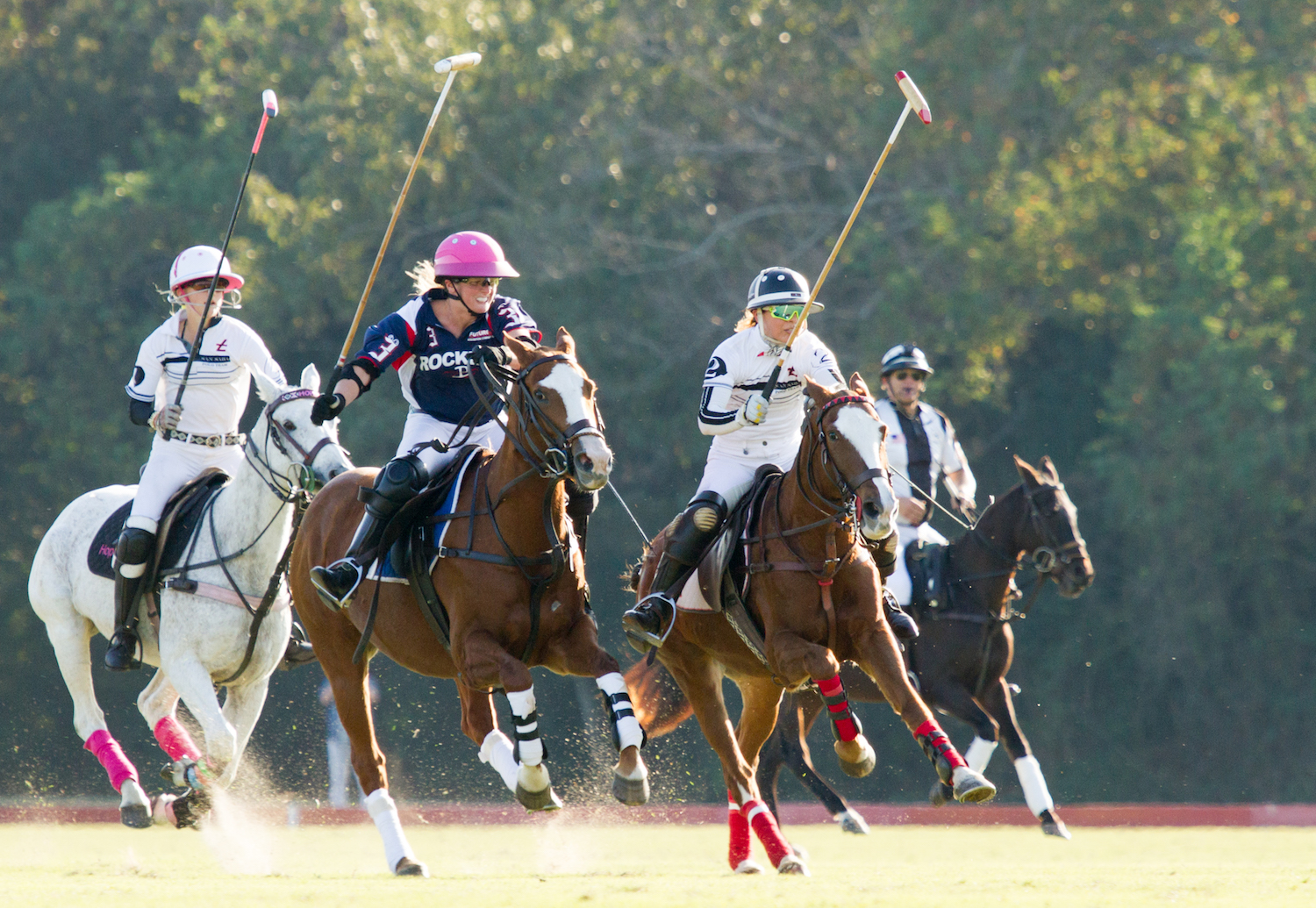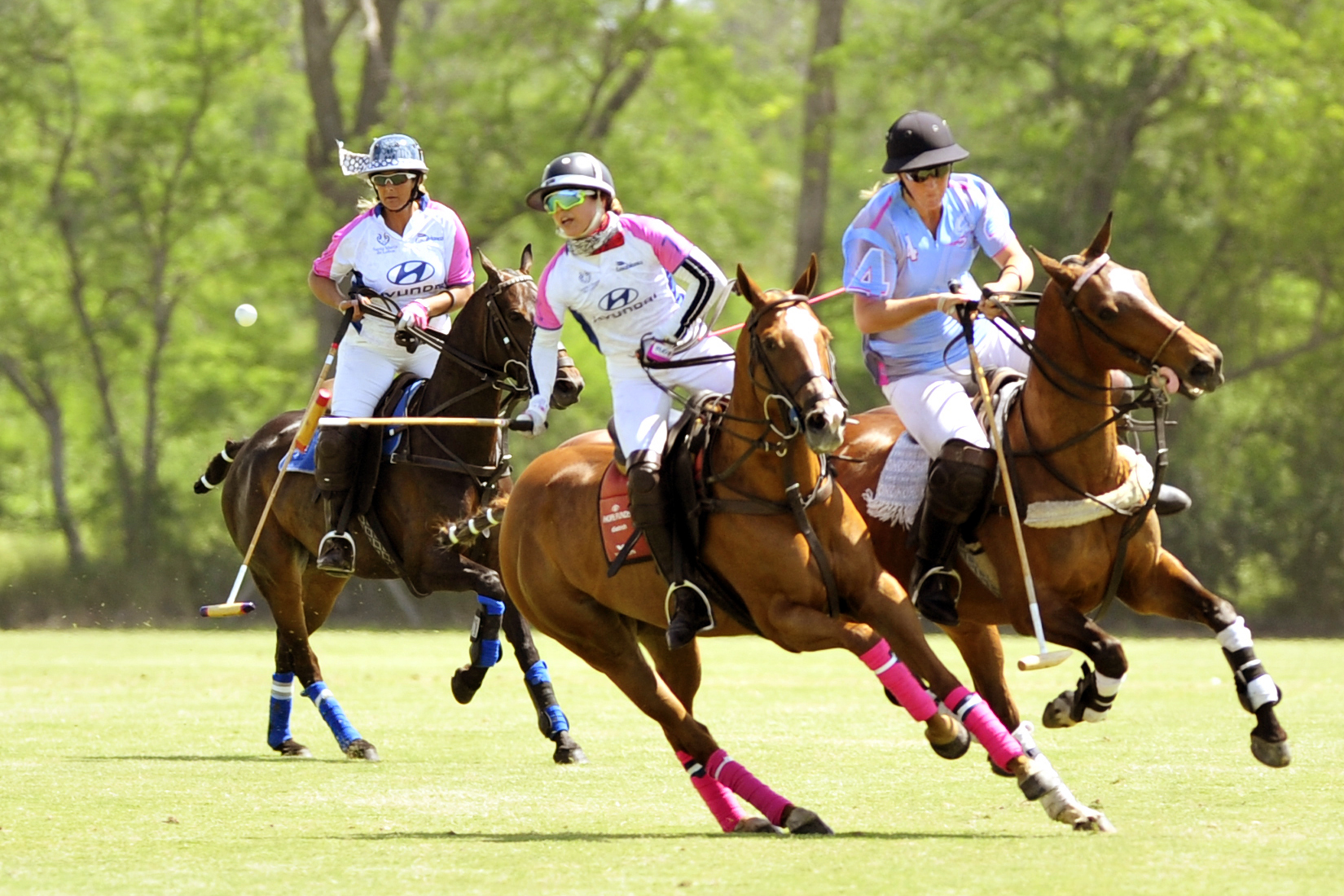As a 6-goal player, I feel privileged to have had the opportunity over the last year to play in several women’s high goal matches. I enjoyed observing everyone’s level of skills, and marveled at the results as it relates to each team’s collective handicaps. I believe the best way we will truly know how fair and balanced the women’s handicap scale compares from player to player within the US, and country to country, is to create as many tournament opportunities as possible to play against and with one another.
Below are two analysis I have written regarding high goal women’s polo handicaps, and how accurate they represent each player participating in these two examples. At the time, the USPA Women’s Handicap Committee had proposed to drop five goal players and above by one goal across the board which promoted me to write my two analysis. I understand there are exceptions, but I believe those exceptions can be addressed individually as we continue to adapt to the women’s handicap scale.
Example One: 2017 Women’s US Open, Houston Polo Club
Two teams that met in the finals were rated at 24/25 and 26 goals playing a total of four chukkurs with an overtime chukkur that followed.
Rocking P – 24/25 goals
Kristy Outhier- 8
Hazel Jackson – 8
Lotte Lamacraft – 5T
Courtney Price – 3
Athena Malin – 4
San Saba – 26 goals
Sarah Weisman – 8
Lia Salvo – 8
Dawn Jones – 6
Hope Arellano – 4
In the Women’s US Open, we went to OT in Houston. Hope Arellano finished with the winning goal. San Saba won by one. This game was described as classic polo. Fast moving, strategic plays, with great horses. Lotte Lamacraft played great for a 5T on someone else’s horses. She did everything many 6 goal players are capable of in the US except she struggled finishing the goals under pressure. Lotte and Hazel Jackson worked very well together. Lotte was Hazel’s perfect team mate in terms of protection, and backing her as Hazel developed plays. Hazel and Kristy Waters played their handicap and then some. Each team had two players from other countries on horses unfamiliar to them. Those of us from the United States played our own top horses. I believe these two teams were as closely matched as could be organized through the women’s handicap system. The final score reflected the handicap difference.

Example Two: Quarterfinals of the 2017 Abierto de polo Femenino, at the Association Fields, Pilar Argentina
The two teams were equally rated at 25 goals playing a total of 6 chukkurs.
La Dolfina Brava II – 25
Mia Novialla Astrada – 4
Tamara Fox – 7
Maria Bellande – 6
Paula Martinez – 8
Santa Maria de Lobos – 25
Dawn Jones – 6
Erica Gandomcar – 6
Tiffany Busch – 7
Clarissa Echezarreta – 6
Santa Maria de Lobos lost in the final seconds on a miscalculated play capitalized on nicely by Paula Martinez of La Dolfina Brava II. Up until the final seconds, the game was evenly matched goal for goal. Any team could have won that match by one. The game was highly competitive from start to finish, where the plays were fast and effective, and the physicality of the game was more intense than the 2017 Women’s US Open. Each team was precisely 25 goals with a final score difference of one goal, clearly demonstrating how the handicaps worked as expected between all the players from the A countries, US, Argentina, and England.
At this time, some USPA Women’s Handicap Committee members suggested all five goal players plus be dropped by one goal across the board. If our all American team were dropped by one goal, then we would have been a 21 goal team. Hypothetically, La Dolfina Brava II should have beaten us handily by four goals. As much as I appreciate The Women’s Handicap Committee’s efforts to fairly balance the US women’s handicaps, I believe their proposed methodology of a one goal drop of all 5 goals plus USPA players is questionable. The two high goal games above offer a credible argument for careful examination of our handicap ratings on an individual basis. A collective drop in handicap could be perceived by the A countries as an effort to advantage ourselves, and I also believe that a mass drop of handicaps across the board risks a compression in handicaps women’s polo has been seeking to remedy.



